
When a SOx scrubber is the strategy for meeting marine emission limits – whether those of the 2020 global sulphur cap or the stricter limits in Emission Control Areas (ECAs) – it becomes key to the vessel’s compliance and economy. Although the technology, design and quality of the scrubber are vital to its success, the way it is operated and maintained will have a decisive impact on its performance during its lifetime. With this in mind, it is crucial to adopt the right scrubber maintenance strategy and to choose the right service provider to implement and safeguard it. This will result in the most reliable operation and optimized performance, which in turn will secure compliance, keep costs to a minimum and make them predictable. The issues and considerations involved are presented briefly in this paper.
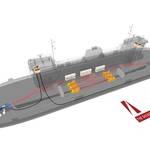
“It is a capital mistake to theorize before one has data.” The above quote came from Sir Arthur Canon Doyle through his famous detective Sherlock Holmes in A Scandal in Bohemia and is as applicable to modern marine hybrid propulsion design as it is to solving mysteries in classic novels.
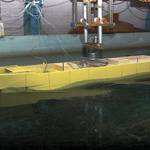
Designing efficient vessels is the heart of what naval architects do. Efficiency in this case is defined as the ratio of useful travelled distance of goods or cargo divided by the total energy put into the transportation propulsion means. In other words, a more efficient vessel design will require less fuel (cost) to move a given cargo a certain distance. This paper will explain why efficiency is important and will explore some aspects of vessel design that can greatly affect a vessel’s efficiency. It will further detail some of our companies’ experience applying these techniques and will finally discuss some ideas that our naval architects and marine engineers are working on for the future. The authors of this paper are both employed by The Shearer Group, Inc. (TSGI) of Houston, Texas. Greg Beers, P.E. is also a Principal with TSGI’s sister company, Bristol Harbor Group, Inc. (BHGI) of Bristol, Rhode Island.
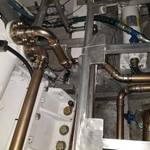
Although a 150-foot yacht is big, the spaces inside to do repair or replacement work are still very small. That’s exactly why the crew at Engineered Yacht Solutions in Fort Lauderdale, Florida, used Viega for a recent pleasure motor yacht job, as well as many others.
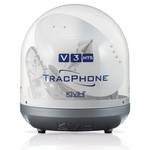
Ship operation is being reinvented, and it’s an evolution with the online revolution and digital connections at its core. The challenges of satisfying and balancing the many connectivity demands of the ship, its operators and its crew, are often far from clear and pack a hidden punch. Such needs include those of the master and officers requiring easy, uninterrupted contact with colleagues, harbor officials, administrators and regulators on shore, and to carry out competitively critical tasks such as least cost routing. Then there are the seafarers who have come to expect daily connectivity with family and friends ashore (access to the Internet has been classed as a human right by the United Nations) and the availability of social media, movies, news, and sports programs they consider part of civilized life.

Traditional pipe-joining methods for shipbuilding are time-consuming and can pose significant safety concerns with the use of a torch or flame for welding and brazing pipe connections. Along with safety concerns, these methods present efficiency, labor and regulatory challenges. These challenges and concerns can be solved with the installation of mechanically attached fittings (MAFs), rather than pipe fittings that require welding or brazing. Advances in technology mean there are an array of fittings for installations and repairs for a variety of materials. These types of innovative fittings are versatile and can provide consistent connections without the need for fire watches or hot work permits. They promote substantial labor reduction with consistent first time quality and simplified testing/commissioning of systems.
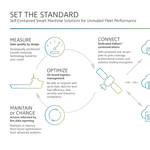
In marine vessels around the world, fuel consumption is commonly measured manually, despite the significant problems associated with doing so. Automated systems are now available to address these problems and to provide a host of benefits, including a reduction in consumption of 10% or greater across fleets.

Any time heavy machinery is being moved from one place to another, it’s important to ensure that the equipment being used for the project is both properly maintained and inspected and also that the proper equipment is being used for the task at hand. At these moments, the decision of whether to use owned equipment or to rent a different piece of machinery to ensure that the project runs smoothly is of the utmost importance.

While there have been a few attempts over the years to design more efficient towboats, as a whole the inland industry has lagged behind the rest of the marine world in regards to the application of modern engineering methods to produce more efficient hull shapes. Conventional wisdom has always held that the shape of the towboat hull had very little impact on the overall efficiency of a line haul or unit tow when it comes to fuel efficiency or vessel speeds. However, TSGI has been applying state of the art Computational Fluid Dynamics (CFD) to analyze this very topic, with significant results to the contrary.
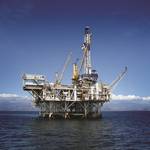
In the marine market, tight deadlines and budget constraints are common obstacles to overcome. Even finding a qualified welder for a marine application is a challenge, so being able to join pipe without flame can make all the difference in the marine world. Reducing time spent on repairs and labor expenses means you can focus on doing your job and keeping your crew safe. However, when dealing with a work environment that involves floating on a volatile sea, it can be difficult to ensure safety and precision while operating ocean-based support vessels, drill ships and oil platforms.
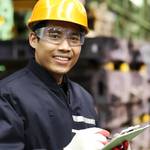
Understanding the many details of a satellite communications solution – and how a comprehensive approach is the fastest path to digitalization
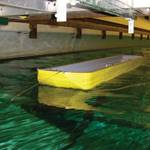
Designing efficient vessels is the heart of what naval architects do. Efficiency in this case is defined as the ratio of useful travelled distance of goods or cargo; divided by the total energy put into the transportation propulsion means. In other words, a more efficient vessel design will require less fuel (cost) to move a given cargo a certain distance. This paper will explain why efficiency is important and will explore some aspects of small coastal vessel design that can improve vessel efficiency. We will also investigate several of the techniques that are used to analyze a vessel’s efficiency utilizing Articulated Tug-Barge (ATB) units as case studies.
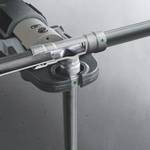
In the marine market, tight deadlines and budget constraints are common obstacles to overcome. Even finding a qualified welder for a marine application is a challenge, so being able to join pipe without flame can make all the difference in the marine world. Reducing time spent on repairs and labor expenses means you can focus on doing your job and keeping your crew safe. However, when dealing with a work environment that involves floating on a volatile sea, it can be difficult to ensure safety and precision while operating ocean-based support vessels, drill ships and oil platforms.

By operating on both land and water, marine repairers and equipment installers tackle a variety of tasks from general maintenance and repair, to upgrading and installing state-of-the-art systems and equipment. Along with these tasks comes a wide array of maritime risk exposures, both large and small, which the business owner needs to adequately address.
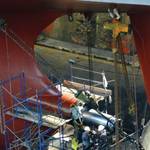
Anything can happen on a jobsite. Your equipment could malfunction or the weather might cause a whirlwind of unexpected issues, or even worse, someone could get hurt. Unfortunately, not much can be done when circumstances such as those arise, which is why developing preventive strategies is crucial to having a successful and safe project. One of those strategies is always choosing safe and reliable lifting equipment. But the question that remains: is it safer to rent or to buy?